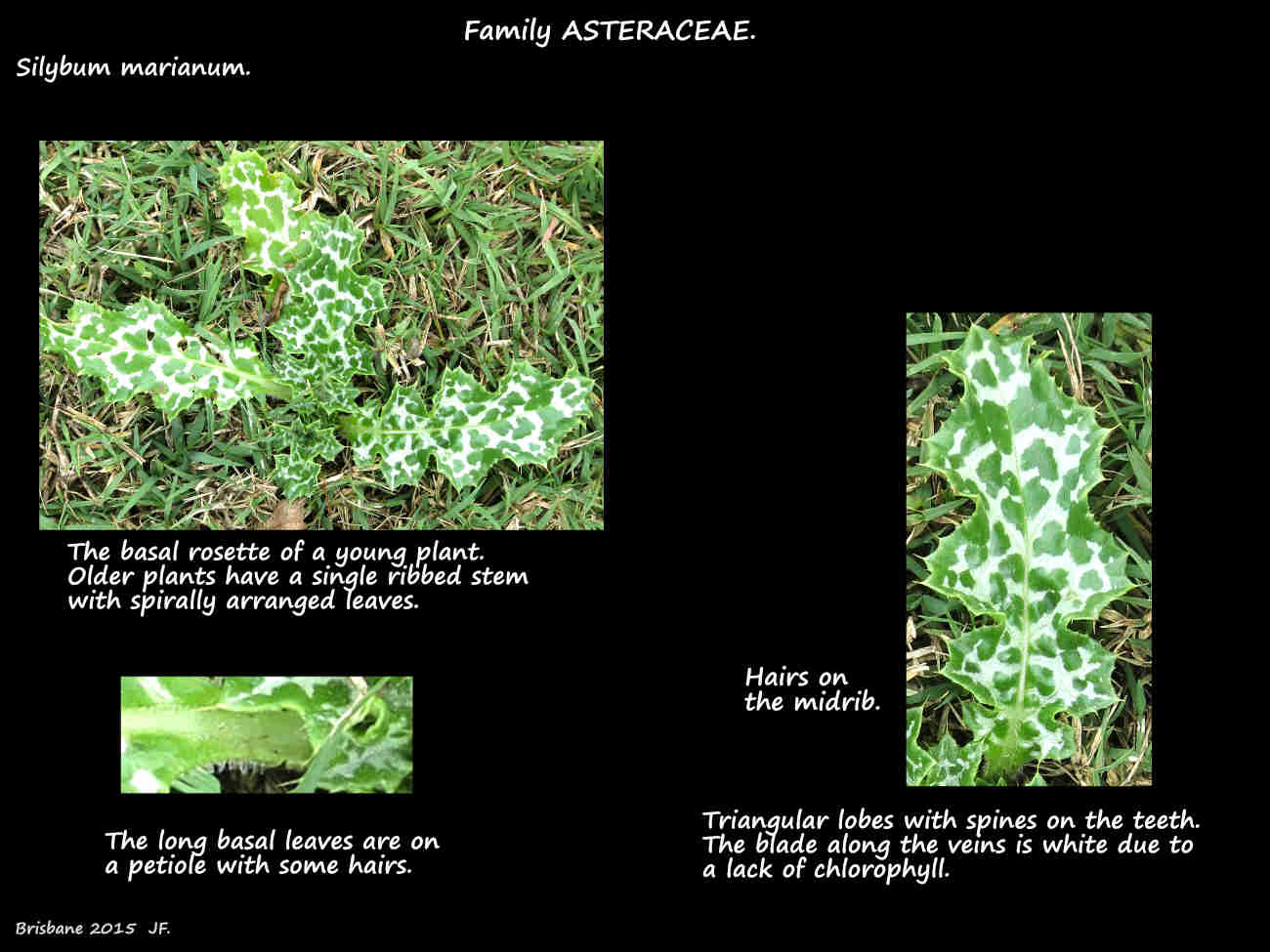Silybum marianum.
The Variegated or Milk thistle is widely naturalised in S. E. Queensland where it is said to be fairly common.
The erect annual or biennial plants are up to 2 (3) m high with a single stem that branches towards the top.
The thick lower stem is ribbed, has no wings or spines and there are usually few or no hairs.
The basal rosette has elliptic, lanceolate to oblanceolate leaves up to 60 cm long and half as wide that are on a petiole with wings.
The large triangular lobes have spiny teeth on the edges and a stiff yellowish spine up to around 1 cm long at the tip.
The smaller stem leaves, alternately arranged in a spiral have large basal lobes but no petiole.
The upper leaves gradually become less lobed but the edges still have teeth with spines.
The upper surface of them all is a shiny green with whitish areas along the veins where chlorophyll is lacking.
There are a few small spines or hairs along the edges and on the veins on the upper surface. Hairs are more dense underneath.
The single terminal flower-heads, up to 13 cm wide are on a peduncle up to 30 cm long.
The ribbed peduncle has a few small leaf-like bracts or spines and it may have some hairs at the top.
The urn-shaped involucre has up to 8 rows of stiff triangular to ovate bracts or phyllaries.
Most of the bracts, up to 5 cm long have tiny spinules on the edges and a rigid yellowish spine at the tip.
The lower ones may have cobweb-like hairs.
The florets are on a flat receptacle that has no scale-like paleae.
The heads are discoid with no ray florets.
The pappus consistss of whorls of bristles 10 to 15 mm long with microscopic barbs on the edges.
The corolla tube, with the throat, is nearly long 3 cm long and has 5 lobes up to 1 cm long.
There are 1 or 2 free linear lobes and 4 or 3 partially fused ones.
The narrow tube, and the wider throat are white or pale purple and the lobes a deep purple or reddish-purple.
The five 3 mm long stamen filaments, inserted onto the corolla throat have some glandular hairs.
The upper parts, and the anthers are fused into a tube.
The filaments are white and the anthers are purplish near the top where there is a small appendage.
Anthers open inwards through longitudinal slits.
The whitish inferior ovary, under 2 mm long has 1 locule with a single ovule.
The 3 to 4 cm long style, passing through the anther tube, extends about 5 mm past it.
White with a purplish upper section the style has 2 short stigma lobes.
The cypselae (not achenes) have a mottled seed around 7 mm long.
There is a pappus of 3 to 6 whorls of bristles up to 2 cm long and some shorter hairs.
The pappus falls off as a unit.
J.F.


